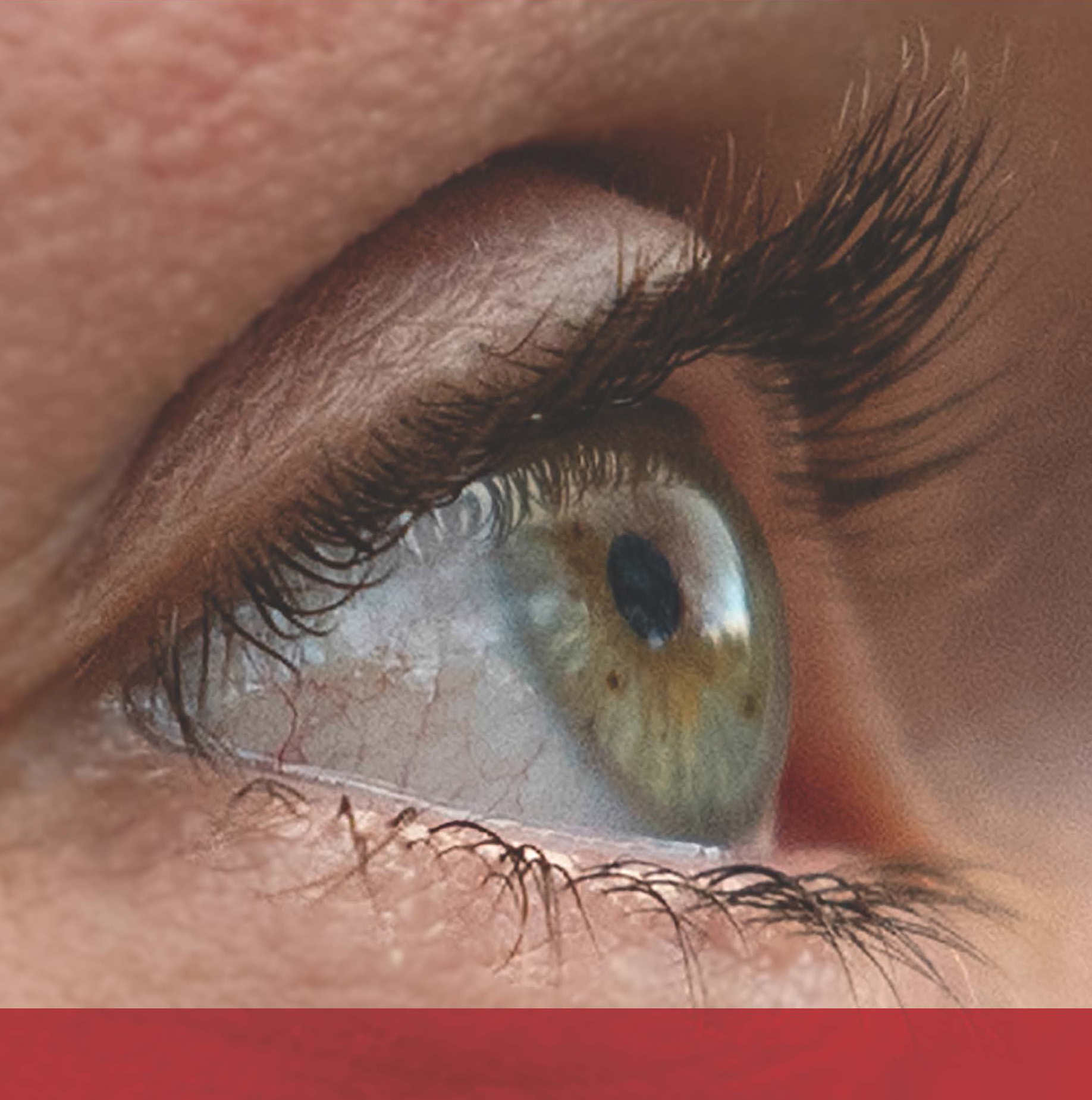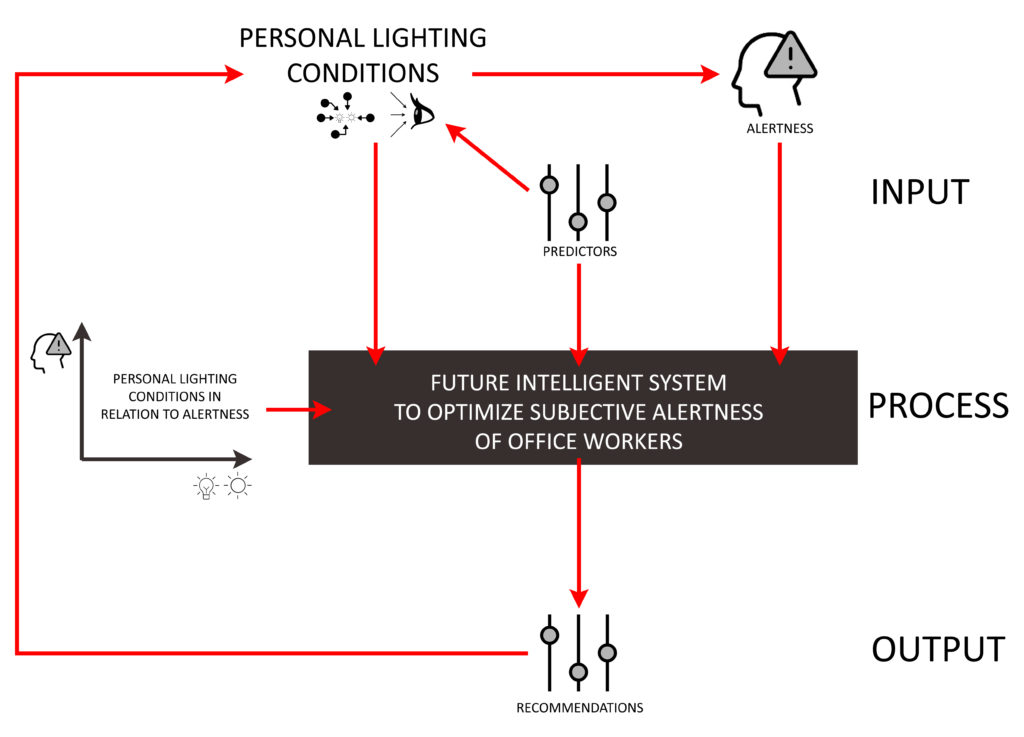
Ph.D thesis by Juliëtte van Duijnhoven, Technische Universiteit Eindhoven (NL)
Lighting controls in offices are still mainly focused on energy savings. However, focusing on a potential productivity increase of office workers would lead to much higher savings in company costs. A less alert office worker performs a task worse compared to a more alert office worker. This project aimed at developing input (personal lighting conditions, predictors of personal lighting conditions, and its relation with subjective alertness) for intelligent systems to optimize subjective alertness of office workers. Personal lighting conditions are defined in this thesis as continuous lighting conditions at eye level. A systematic approach has been developed which comprises of four parts: gathering personal lighting conditions,interpreting personal lighting conditions, identifying predictors of personal lighting conditions, and relating personal lighting conditions to subjective alertness.

First, in order to gather continuous personal lighting conditions, one can perform Person-Bound Measurements (PBM), Location-Bound Measurements (LBM), or estimate them via a newly developed Location-Bound Estimations (LBE) method (Chapter 2). This method estimates continuous lighting conditions based on a predictive model and a reference measurement instrument which continuously measures the lighting conditions at the reference location. Although this method complies with the continuous measurements, it only estimates at locations which are specified with a predictive model. The location of the office workers needs to be tracked and inserted in this method to obtain personal lighting conditions. The location of the office worker was certainly included in the PBM method. Although the performance and comfort issues of PBM devices were notable, these devices were used to investigate personal lighting conditions of office workers in the majority of this project.
Second, personal lighting conditions of 62 Dutch office workers gathered during a field study in spring 2017 were interpreted according to light factors identified to initiate effects beyond vision (Chapter 3). Despite the large individual differences, some general trends were visible. The light quantity peaked three times during the day (one in the early morning, one during lunchtime, and one in the late afternoon). In addition, the light quantity “elsewhere” (all locations except “at work” and “at home”) was significantly higher than “at home” or “at work”. And last, the light spectrum (represented as correlated colour temperature) did not vary much throughout the day.
Third, the same field study revealed predictors influencing personal lighting conditions (Chapter 4). Weather conditions, the daily schedule of an office worker (i.e., time spent “at work”, “at home”, or “elsewhere”), office characteristics, and personal conditions were found to influence personal lighting conditions. Not all office lighting systems can be controlled per luminaire to change personal lighting conditions at work. Therefore, another way of addressing the office workers to their best personal lighting conditions at work may be to recommend a desk which fits the lighting conditions best for them.
Fourth, the personal lighting conditions were investigated in relation to subjective alertness (Chapter 5). The influence of lighting conditions on subjective alertness was often demonstrated by comparing two or more different light scenarios. In the field studies performed in this project, the lighting conditions were uncontrolled and varied per individual and throughout the entire day. This discrepancy in lighting conditions may explain the lower number of significant correlations found between light and subjective alertness in the field studies. In an exploratory field study in the Netherlands, the data from only 6 out of 46 participants showed a significant correlation between light and subjective alertness. This low number of correlations may also be explained by the type of office workers participating in the field study. The relationship between light and subjective alertness was tested in a second field study as well (N=62). Besides light quantity, light spectrum and duration of light exposure were included in the investigation of the relationship between personal lighting conditions and subjective alertness as well. This field study demonstrated that the duration of light exposure may be relevant in this relationship. Nearly all dose-response curves between personal lighting conditions and subjective alertness determined in this study turned out to be not significant (p<.05). However, the results may be of high importance in the exploration of the exact relationship between personal lighting conditions and subjective alertness.
The above-mentioned systematic approach conveys personal lighting conditions, predictors of personal lighting conditions, and its relationship with subjective alertness to be inserted in intelligent systems to optimize alertness of office workers. Such systems would provide recommendations for office workers to adjust their own personal lighting conditions instead of adjusting the electric lighting at the location of the office worker. This type of system may not only be energy efficient (since it uses the availability of daylight to its optimum) but also practical because it can be applied everywhere as long as it concerns the (indoor or outdoor) environment of an individual. The system can be used by companies to support their office workers to experience their optimal subjective alertness during the entire day. The office workers would feel more alert whereas the employers would see productivity gains to help them reducing their company costs.

You can contact Juliëtte van Duijnhoven (J.v.Duijnhoven1@tue.nl) and download her thesis following this link.



